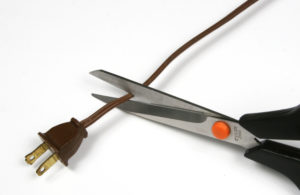Hardware – What’s the ‘holdup’?
 This post discusses power supply ‘holdup’, and how it can impact network or server hardware uptime. The holdup time or ‘output holdup time’ is the length of time that a given power supply can maintain output power to the switch or server after it’s input power supply has been cut. The dependent host will shut down if the power supply isn’t restored to the PSU before the hold-up time expires. I like to think of holdup time as a power buffer.
This post discusses power supply ‘holdup’, and how it can impact network or server hardware uptime. The holdup time or ‘output holdup time’ is the length of time that a given power supply can maintain output power to the switch or server after it’s input power supply has been cut. The dependent host will shut down if the power supply isn’t restored to the PSU before the hold-up time expires. I like to think of holdup time as a power buffer.
Background
I recently noticed holdup times were listed in the power-supply section in vendor data-sheets. It’s quite possible that the holdup specs have always been listed, but I’m just starting to notice them now. The snippet below is from the power supply specs of a 3750-X.
So we can see that an 1100 Watt power supply will maintain output power for at least 10ms. It’s also interesting to note that the 1100W power supply has a shorter holdup time than the other AC PSUs. Also, I wonder what the the holdup will be @208 volts? The next we need to answer is, “how big does the output hold time need to be?”
Power Systems
The hold-up time is of critical importance when the host has a single power supply. The single power supply must be fed by a redundant power system that requires a switchover time. If there’s no redundancy in the power system, then the tens of milliseconds the holdup will give you enough time to stop the switch rebooting.
The simplest example is a single power supply in your switch receiving power from a small UPS. The UPS will have a rated switchover time, which is the time it takes for it to start supplying power from it’s battery after the AC supply is cut. This switchover time needs to be less than the hold-up time for your power supply.
if ( PSU holdup time > Switchover-time ):
no-one-notices
else:
switch-reboots
These mini-UPS units may or may not feature in your environment, but remember that there are other power system elements which need switchover time. If you have a servers or switches with a single PSU they may be fed power by an in-rack Auto Transfer Switch (ATS).
An Auto-transfer switch takes two AC power feeds (A & B) and supplies a single AC output, typically to a rack mounted power distribution unit (rPDU). The ATS may be supplying power from feed A to the rPDU, and in the event of system A failure it would need a switchover time to begin supplying power from the B feed. The formula above still holds true.
What about A & B feeds?
But most modern networking hardware have dual redundant power supplies. Do you still need to care about holdup time? Probably not, but it’s worth checking with your electrician or facilities manager. Your A & B feeds are most likely fed by dedicated data-center UPS.
There is normally a much larger ATS upstream of the data-center UPS to switch between generator and power grid supply, but the UPS should continue to feed power while power is switched from grid supply to generator.
Sherpa Summary
The advice here is simple; know the holdup time of your switch and the switchover time of your power-system. Be careful when bargain hunting for UPS units and make sure you know your switchover requirements.
